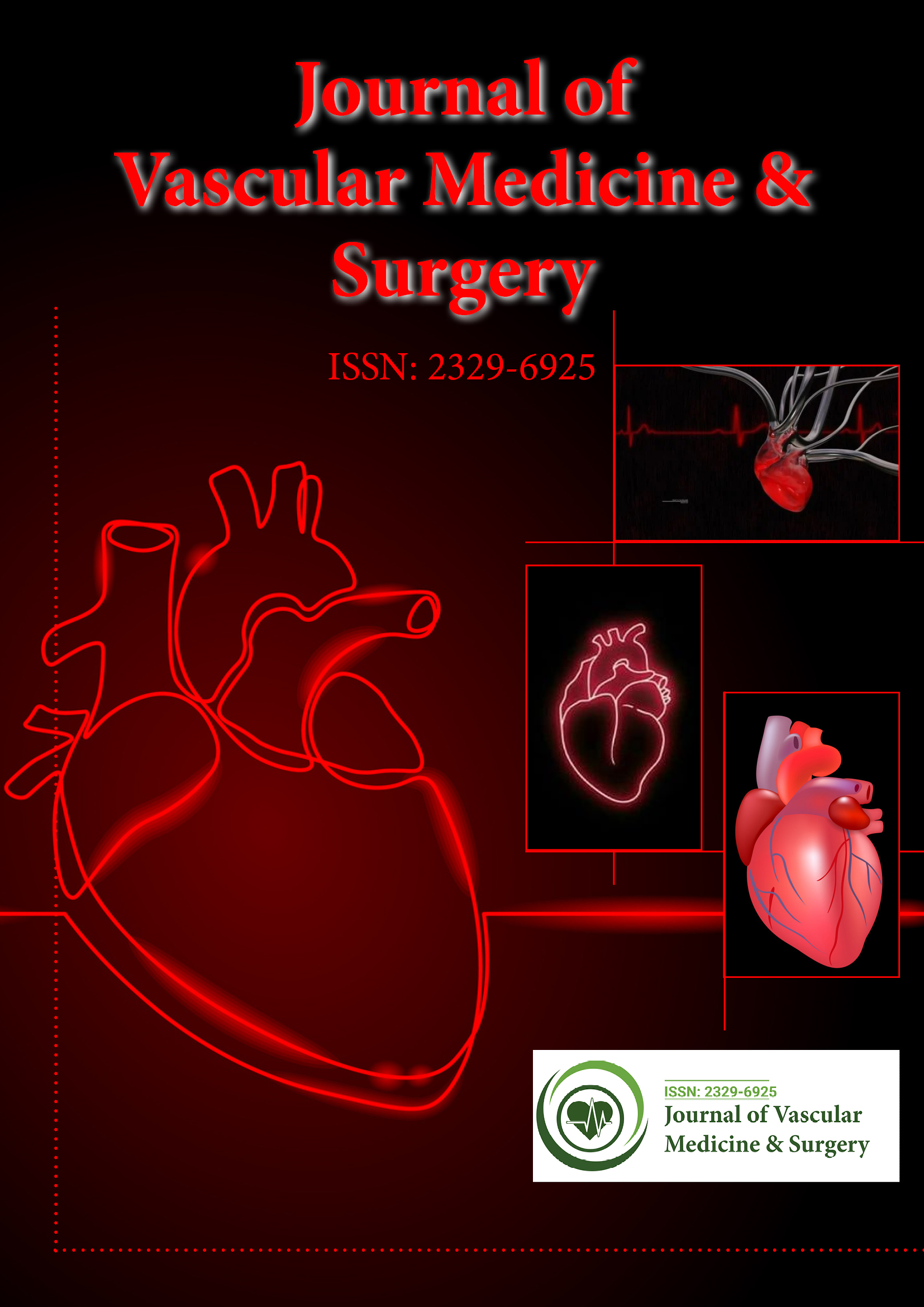Indexed In
- Open J Gate
- Academic Keys
- RefSeek
- Hamdard University
- EBSCO A-Z
- OCLC- WorldCat
- Publons
- Euro Pub
- Google Scholar
- SHERPA ROMEO
Useful Links
Share This Page
Journal Flyer

Open Access Journals
- Agri and Aquaculture
- Biochemistry
- Bioinformatics & Systems Biology
- Business & Management
- Chemistry
- Clinical Sciences
- Engineering
- Food & Nutrition
- General Science
- Genetics & Molecular Biology
- Immunology & Microbiology
- Medical Sciences
- Neuroscience & Psychology
- Nursing & Health Care
- Pharmaceutical Sciences
Perspective - (2023) Volume 0, Issue 0
An Overview on Vascular Medicine: Structure and Function of the Circulatory System
Bonaca Michael*Received: 07-Jun-2023, Manuscript No. JVMS-23-22230; Editor assigned: 09-Jun-2023, Pre QC No. JVMS-23-22230 (PQ); Reviewed: 23-Jun-2023, QC No. JVMS-23-22230; Revised: 30-Jun-2023, Manuscript No. JVMS-23-22230 (R); Published: 10-Jul-2023, DOI: 10.35248/2329-6925.23.S16.520
Description
Vascular Medicine focuses on the diagnosis, management, and prevention of diseases affecting the circulatory system, including arteries, veins, and lymphatic vessels. It is a specialized field that encompasses the study and treatment of diseases affecting the circulatory system. The circulatory system, consisting of arteries, veins, and lymphatic vessels, plays an important role in delivering oxygen, nutrients, and hormones throughout the body. Identifying the structure and function of the circulatory system is essential for effective diagnosis and management of vascular diseases.
Vascular diseases encompass a wide range of conditions, including atherosclerosis, peripheral artery disease, deep vein thrombosis, varicose veins, and lymphedema. Atherosclerosis, characterized by the build-up of plaque in the arteries, it is a major cause of cardiovascular diseases, such as coronary artery disease and heart stroke. Peripheral artery disease involves the compression of arteries in the limbs, resulting in decreased blood flow and symptoms such as leg discomfort and ulcers. Deep vein thrombosis refers to the formation of blood clots in deep veins, typically in the legs, while varicose veins result from the malfunctioning of vein valves. Lymphedema involves the accumulation of lymphatic fluid, causing swelling and discomfort.
Diagnostic techniques of vascular medicine
Vascular Medicine evaluates the condition of the circulatory system using a wide range of diagnostic procedures. Non-invasive imaging techniques, such as Doppler ultrasound, Computed Tomography Angiography (CTA), and Magnetic Resonance Angiography (MRA), provide detailed images of blood vessels and assist in identifying of blockages, aneurysms, and other abnormalities. Ankle-Brachial Index (ABI) measurement helps to evaluate peripheral artery disease, while venous duplex ultrasound is used to assess venous disorders. Invasive procedures, such as angiography, may be necessary for accurate visualization of blood vessels and the intervention performance.
Treatment options of vascular medicine
The treatment of vascular disorders is determined by the cause and its severity. Lifestyles modifications, including regular exercise, healthy diet, and avoid smoking, are essential for overall vascular health. Medications, such as antiplatelet drugs, anticoagulants, and vasodilators, are commonly prescribed to manage symptoms and prevent complications. Interventional procedures, such as angioplasty, stenting, and thrombectomy, are performed to restore blood flow and alleviate blockages. In severe cases, surgical interventions, such as bypass grafting or endarterectomy, may be necessary.
Multidisciplinary techniques
Vascular medicine frequently requires a multidisciplinary approach, such as the involvement in multiple healthcare professionals, including vascular surgeons, interventional radiologists, cardiologists, and vascular nurses. This association ensures comprehensive and individualized patient care, incorporating medical management, minimally invasive interventions, and surgical procedures. Rehabilitation programs and patient education plays an important role in optimizing long-term outcomes and preventing disease progression. Importance of Early detection and intervention are essential in vascular medicine to prevent complications and improve patient outcomes. A regular scans and risk assessment helps to identify individuals at high risk for vascular diseases, allowing for timely interventions and lifestyle modifications. A public education and awareness campaign plays an important in emphasizing early detection and reducing the burden of vascular disease in the general population. Advancements in technology and research continue to increase innovations in vascular medicine. Novel imaging techniques, such as Optical Coherence Tomography (OCT) and molecular imaging, provide a targeted therapies, genetic testing, and regenerative medicine techniques provide desire personalized therapy and prevention methods.
Vascular medicine serves as essential in the assessment, treatment, and prevention of circulatory system conditions. Vascular medicine aims to improve patient outcomes and overall vascular health through developing an exhaustive awareness of the circulatory system's structure and function, as well as advances in diagnostic procedures and treatment alternatives. The field of vascular medicine continues to advance and address the increasing prevalence of vascular illnesses on society through early detection, interdisciplinary interaction, and an emphasis on patient-centered care.
Citation: Michael B (2023) An Overview on Vascular Medicine: Structure and unction of the Circulatory System. J Vasc Surg. S16:520.
Copyright: © 2023 Michael B. This is an open access article distributed under the terms of the Creative Commons Attribution License, which permits unrestricted use, distribution, and reproduction in any medium, provided the original author and source are credited.

